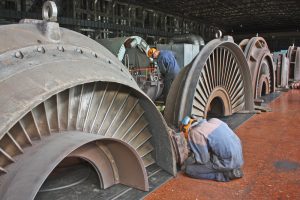Objective
Our client specialises in repairs of customer owned, mobile assets and equipment, predominantly from within the Mining industry. Over time, they had developed some specific internal and external processes that had become critical to meeting customer requirements, but were managing these requirements in Excel. They searched for an “off the shelf” software package that covered these industry-specific requirements, but were unable to find something that would work without significant compromise or excessive cost. Ultimately, they decided that they needed a bespoke “sub-module” within their current ERP, which would handle the work for this business unit. We were engaged to design and build the sub-module within the ERP.
Solution Delivery
- We performed an initial process review, where we observed both the physical and electronic processes in the business unit. This provided understanding of what did or didn’t work in the current electronic processes in Excel, as well as how a system process might align effectively with the movement of the repair item between the different areas of the workshop.
- Since the move from Excel would be a significant change, it was decided to initially write a simple control process around the current ERP invoice process. This would prompt for the additional information, while still maintaining the client output. Even though this was a simple process, staff in the business still struggled with moving to a more systems-based and controlled process. Management decided to sit with the simpler process in the short term, until they could wean users away from Excel.
- After roughly two years on the simpler process, the business had evolved and now the users wanted more from the systems-based process. Management also realised they needed tighter controls around the systems-based process, as users had developed ways of working around the process, which then caused data issues. They approached us and asked us to re-engineer the systems process to function more like a distinct sub-module, with its own rules and controls.
- We used the existing system process as the basis for the work, but then designed a new programmatic front end for the process. Whereas previously all input came from existing the invoice order lines, the new front end eliminated that ability. All actions were changed to occur from named “modes” or “tabs” in the screen, with minimal data input by the user and the programs performing all the work in the back end.
- During BETA testing, the internal business Project Sponsor identified further work-arounds that staff were using that would break the indent item ordering processes. Further tweaks and adjustments to the design occurred in order to either prevent the incorrect action, or control it through a new tab screen.
Achievements
- Taking the time to do the work in two stages proved ultimately successful in providing a good solution. Previously, staff in the business unit would complain about first the Excel processes and then the ERP process, stating that both were time-consuming and did not provide all the information needed. After the Stage 2 rework and adjustments, staff are now happy with the process and the ongoing data issues no longer exist.
- It took significant investigation and thought in order to “lock-off” all the “bad” processes that were happening in the ERP, but the effort ensured that the final solution was a seamless product that met all needs.
- The business has doubled in size since the Stage 2 rework roll-out and the new front-end and processes have been able to withstand that growth easily.
- Due to the bespoke nature of the work, it is simple now for the client to add enhancements to this sub-module as needed. This has helped them to further transform this change into a product that not only meets process needs but now actively improves them.
If you’d like to learn more about this project or talk to us, click here for our contact details.
